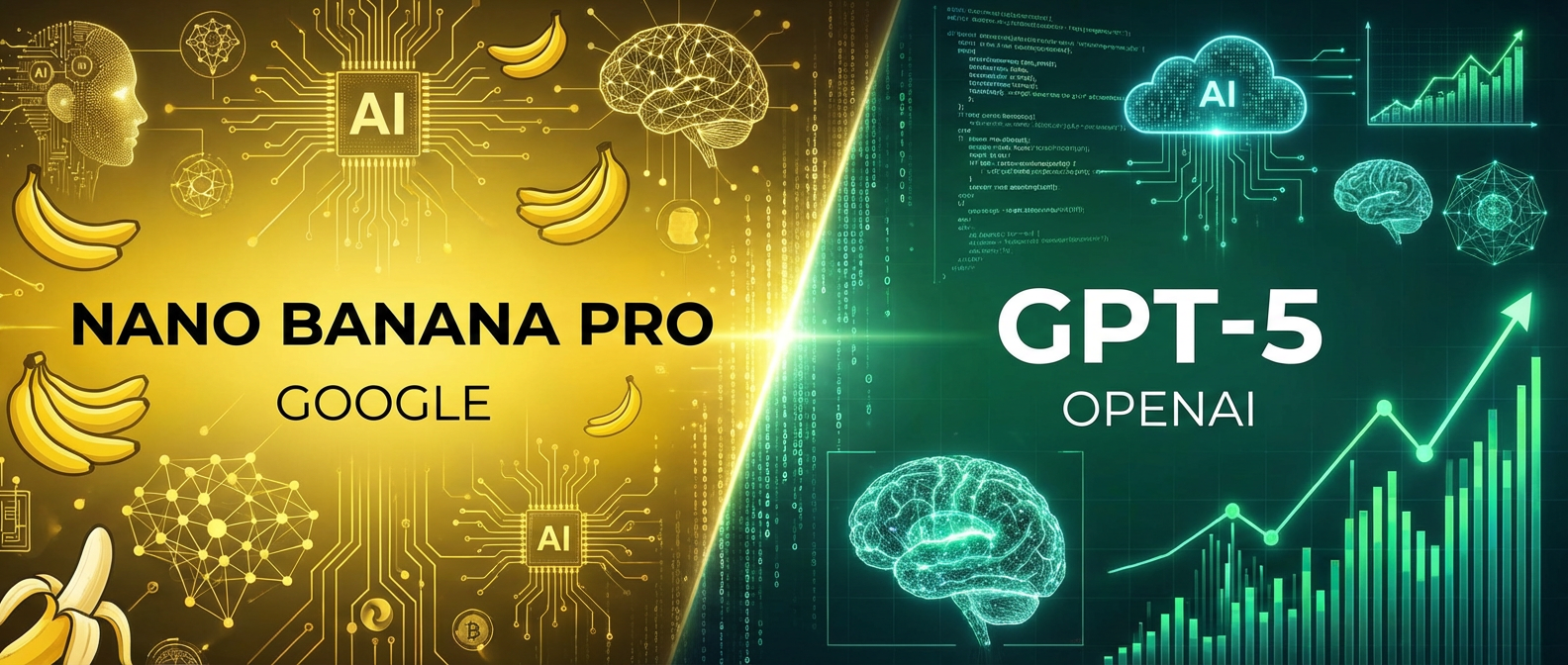Throughout history, having a personal assistant was a luxury for the few. Emperors had scribes, wealthy families had butlers, and today, CEOs have executive assistants managing their hectic schedules. Now, thanks to the power of AI, anyone can have a personalized (and personal!) assistant at their fingertips.
Why Create a Personal AI Assistant?
At first, let's establish why you may need this. So imagine having an AI that can:
Manage your schedule: Never miss an appointment or double-book yourself again.
Draft emails and messages: Say goodbye to writer's block and hello to perfectly crafted communication.
Research and gather information: Get instant answers and insights without spending hours browsing the web.
Control smart home devices: Adjust the thermostat, turn on the lights, and play your favourite music with voice commands.
These are just a few examples of how a personal AI assistant can simplify your life. By building one yourself, you can tailor its skills and personality to your unique needs and preferences. Here is a great tutorial I found on making own assistants in a form of chatbots.
Platforms for Building Your Own AI Assistant
Creating your own AI personal assistant has become increasingly accessible, even for beginners with minimal technical expertise. Platforms like OpenAI's GPT and other chatbot frameworks simplify this process, offering intuitive interfaces and pre-built models. As Dr. Fei-Fei Li, co-director of Stanford’s Human-Centered AI Institute, highlights, "AI technology is transforming accessibility and productivity by empowering users with little to no coding background to create their own digital assistants, thus democratizing access to AI capabilities" . But is it really like this and can you build your own personal assistant with little effort? Or is this reserved to very advanced users?
Truth be said, if you leverage such platforms, then you can easily customize and deploy their assistants for various tasks, from managing schedules to automating simple queries. This advancement not only enhances personal productivity but also bridges the gap between complex AI technologies and everyday users. So let's dive into three leading platforms that make creating your own AI assistant surprisingly simple:
1. ChatGPT: Your Go-To for Conversational AI
GPT 4o, developed by OpenAI, is probably a most cutting-edge AI model based on the Generative Pre-trained Transformer architecture. It engages in natural conversations with remarkable fluency. That means, GPT is best known for generating human-like text. Starting with GPT-2 in 2018, which amazed many with those text generation features, the technology advanced with GPT-3 in 2020 and GPT-4o in 2024, making it even more adept at understanding and responding to a wide range of prompts.
The significance of ChatGPT lies in how useful and easy to use it is. It enables the creation of custom AI assistants, chatbots, and content generators without needing extensive programming skills. This has revolutionized customer service, education, and personal productivity by automating routine tasks and enhancing communication. Its ability to mimic human conversation opens up numerous possibilities for improving efficiency across various fields.

OpenAI's dedication to making AI accessible has driven the continuous development of ChatGPT. By offering user-friendly tools and comprehensive documentation, OpenAI allows users of all skill levels to harness advanced AI capabilities. This approach democratizes AI technology, fostering innovation and ensuring that its benefits are widely distributed across different communities and industries. Here's how to use it to build your own AI:
1.1. Define Your Assistant's Purpose
Before you start, ask yourself: "What do I want my AI to do?" This could be anything from managing your calendar to writing creative stories. Having a clear goal will guide your training process. Keep in mind, that some sets of tasks are easier to automate and some are much more complicated. Depending on your experience and needs, you may start with the simplest things possible, or you may start doing custom pages and chatbots if you are ready for it.
1.2. Craft a Persona (Optional)
Give your AI personality! Will it be a witty sidekick, a formal assistant, or something in between? Decide on a name, a communication style, and even a backstory if you like. Yes, ChatGPT enables the creation of personal and customized assistants. Users can also integrate ChatGPT into various platforms, such as websites, apps, and messaging services, to create assistants that can handle tasks like answering questions, providing recommendations, or managing schedules.
According to OpenAI, ChatGPT can be fine-tuned to meet particular requirements, allowing developers to tailor its responses and behaviour to suit specific use cases (as stated by MDPI). This customization capability extends to creating personalized interactions that can enhance user experience in various contexts, from customer service to personal productivity tools. Additionally, the intuitive interface and extensive documentation provided by OpenAI make it accessible for users without extensive programming skills, democratizing the development of sophisticated AI-driven assistants.
1.3. Train with Prompts and Examples
Think of prompts as instructions for your AI. For example:
To train a calendar assistant:
"You are a helpful assistant that manages my schedule."
"Add a meeting with [Name] on [Date] at [Time] to my calendar."
To train a writing assistant:
"You are a creative writing assistant that helps me write stories."
"Write a short story about a detective solving a mystery in a futuristic city."
Provide plenty of examples to show your AI the desired output. The more data you feed it, the better it will become at understanding and fulfilling your requests.
1.4. Refine and Iterate
Building an AI is a continuous process. Regularly test your assistant to see how it performs. Try different types of questions and tasks to understand its strengths and weaknesses. Provide feedback on its responses. If it makes a mistake, correct it and give examples of the desired behavior. This helps the AI learn and improve over time.
Make small adjustments to it and its programming. Tweaking the prompts or adding new examples can enhance its accuracy. Monitor its progress. Keep track of improvements and identify areas that still need work.
Be patient and persistent. It might take several iterations to get the AI to perform as you want. Each cycle of testing and refining brings it closer to your ideal assistant.

2. Writingmate: Harness the Power of Multiple AI Models
If you don't want to bother with API and difficult technologies, there is a simplr way. Someone has already built a tool that helps you build custom assistants in a more swift way. Writingmate takes AI customization to the next level by offering access to a variety of powerful AI models, including:
GPT models: Ideal for text generation, language translation, and question answering.
Claude and Mistral: Known for their advanced reasoning and conversational abilities.
LLaMa: A family of open-source language models with various capabilities.
DALL-E: A powerful image generation model that can create original images from text descriptions.

Remember, that each of those models is best for different use cases and with such a tool you can switch them easily. Here's how to leverage Writingmate for building your AI assistant:
2.1. Choose Your Models
Select the AI models that best align with your assistant's purpose. For instance, combine GPT for text generation with DALL-E to create an assistant that can both write stories and illustrate them.

2.2. Integrate with Your Favorite Apps
Connect your AI to external applications like Google Calendar, Gmail, Slack, and more. This allows your assistant to interact with the tools you use daily, automating tasks and streamlining your workflow.
2.3. Train on Your Own Data
Upload your own datasets to train your AI on specific information relevant to your needs. This could include anything from customer service logs to technical documentation, making your assistant a true expert in your domain.

2.4. Generate Images and More
With Writingmate, you can go beyond text. Use DALL-E to create custom images for your assistant to use in presentations, social media posts, or even as part of interactive stories.
3. Character.AI: Bring Your AI to Life with Personality
The next tool differs from previous two quite a lot. That is its advantage and disadvantage. Character.AI specializes in creating AI with distinct personalities and conversational styles, making it perfect for:
Building interactive story characters: Craft compelling characters for video games, chatbots, or virtual worlds.
Creating personalized learning companions: Design AI tutors that adapt to different learning styles and provide engaging educational experiences.
Developing unique brand mascots: Give your brand a voice and personality with an AI-powered mascot that interacts with customers on social media or websites.
Here's how to get started with Character.AI:
3.1. Design a Captivating Character
Think about your character's:
Backstory: Where do they come from? What are their motivations?
Personality: Are they funny, serious, adventurous, or shy?
Voice: How do they speak? What kind of language do they use?
The more detailed your character profile, the more realistic and engaging your AI will be.

3.2. Train Through Conversation
Character.AI learns by interacting with you. Engage in conversations with your character, providing feedback and guiding its responses. The platform's AI will analyze your input and adapt the character's behavior accordingly.
3.3. Share Your Creations
Once you're happy with your AI character, share it with the world! Character.AI allows you to publish your creations, making them accessible to others who can interact with them and contribute to their development.

The Future of Personal AI: What are the Possibilities?
The ability to create custom AI assistants is no longer a futuristic dream; it's a reality within everyone's reach. Whether you're a busy professional, a creative writer, or simply someone who wants to explore the power of AI, these platforms provide the tools to build your own personalized digital helper. Writingmate is a simple but powerful option, ChatGPT may offer some very advanced features, and Character.ai is good for characters with more personal qualities.
As AI technology continues to advance, we can expect even more intuitive and powerful tools for creating AI assistants that seamlessly integrate into our lives, making the impossible possible. Interestingly, with platforms like Writingmate, users have the opportunity to integrate multiple AI models, including the likes of GPT's Claude, Mistral, Llama, and more into a single web application. This integration offers a broader range of AI capabilities, from summarizing texts to generating images, all aimed at enhancing user interaction and productivity.
For more insightful articles on AI, visit our blog at writingmate.ai/blog. We create it a love for technology, people, and their needs.
Written by
Artem Vysotsky
Ex-Staff Engineer at Meta. Building the technical foundation to make AI accessible to everyone.
Reviewed by
Sergey Vysotsky
Ex-Chief Editor / PM at Mosaic. Passionate about making AI accessible and affordable for everyone.



